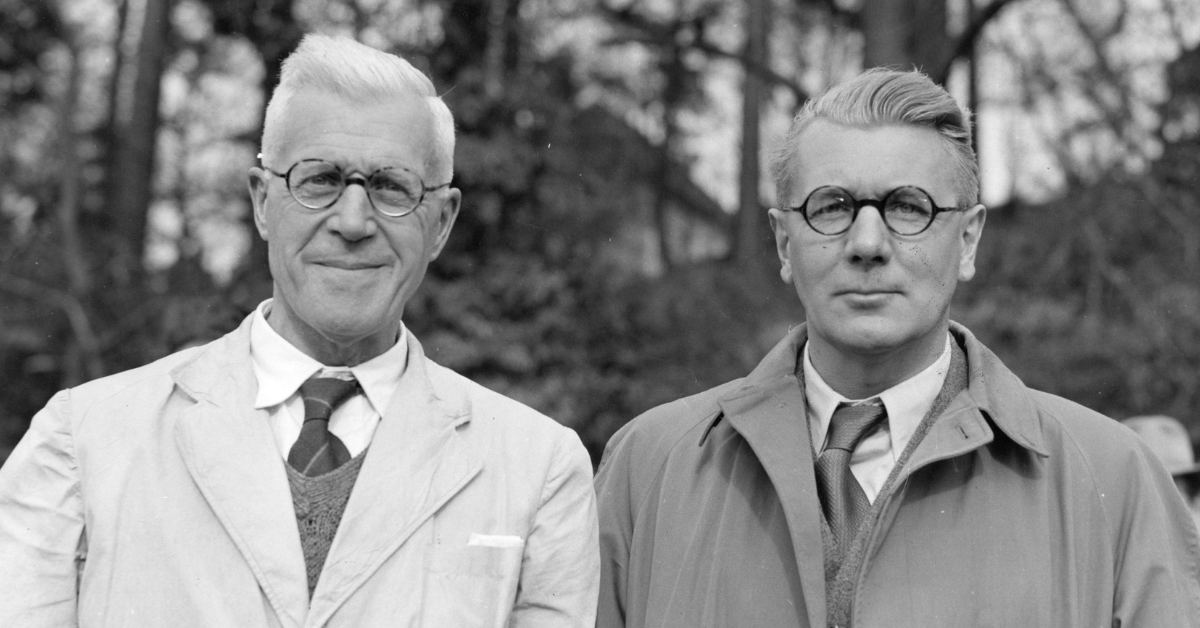When it comes to weird, creative, and sometimes downright ridiculous weapons during WWII, the British were in a league of their own.
Leading the charge in this aspect was an army of ‘mad scientists.’ However, perhaps the maddest of all British scientists at the time was Barnes Wallis. You may know Wallis as the man who invented the famous bouncing bomb, named Upkeep, that was used by the Dam Busters to destroy enemy dams.
Arguably, this was not his craziest invention, the crown for which goes to his earthquake bombs.
An Earthquake Bomb
The idea behind both his earthquake bombs and bouncing bombs were similar in that they both used a medium much denser than air to transmit their explosive force.
In WWII, conventional bombs were designed in a way that maximized the amount of explosive filling contained inside, usually by making the bomb’s shell as thin as possible. This sort of bomb was extremely effective when used against soft targets like factories, railyards, and houses.
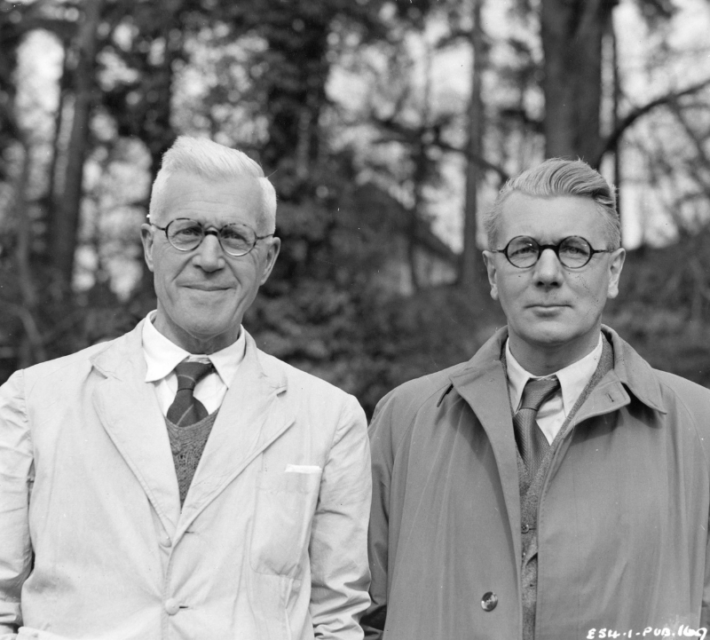
They were much less effective against hardened targets like German bunkers, though, as their thin walls offered little penetrating power. After crumbling and exploding on the roof of a German bunker, which could have a reinforced concrete thickness in excess of 5 meters, the resulting explosion would harmlessly radiate away from the bunker.
Similarly, when exploding beside that same bunker, the explosion would bounce off the walls, causing nothing more than a loud noise and a headache for the occupants inside.
To destroy a structure, it is usually the shockwave that does most of the heavy lifting, rather than the heat and debris. Unfortunately (or fortunately, depending on your circumstances), a shockwave is transmitted relatively poorly through the air.
Understanding this, Wallis came up with the idea of a bomb that transmitted its explosive power through the ground, rather than through the air — quite literally an earthquake bomb.
He originally proposed the idea in 1941, in the form of a 10-ton bomb that would intentionally miss the target, burrowing deep into the ground beside it before exploding after a short-fused delay.
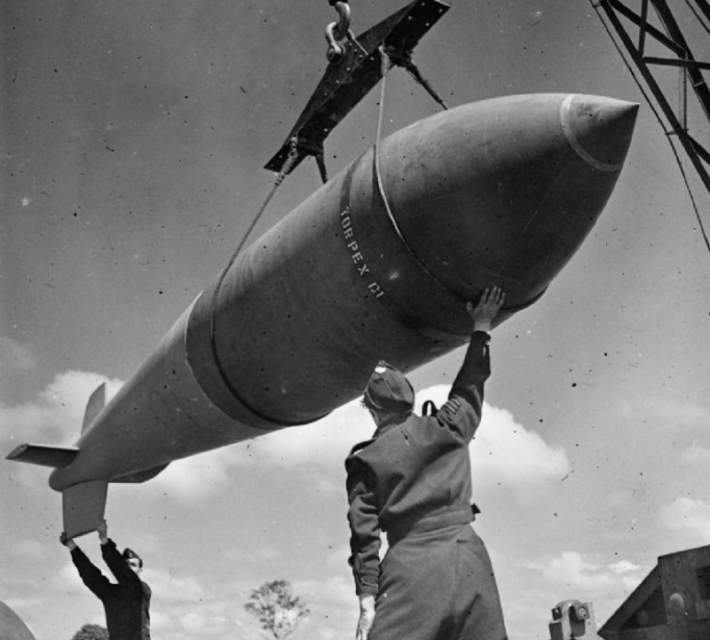
The detonation’s resulting shockwave — which was immense — would transfer through the soil and into the foundations of the target, rocking it until it was destroyed beyond repair. Another scenario the bomb could cause was an underground cavity that the target would then “fall” into, which would again destroy its foundations.
Surprisingly, a target may look in relatively good condition after being destroyed by an earthquake bomb, but its work is far more effective than it would first seem. A target hit by an explosion can be repaired, as the damage is often limited to immediate areas. However, a target hit by an earthquake has its entire foundations rocked to their core, causing misalignments in the structure that cannot be repaired.
The Tallboys
As there was no aircraft capable of carrying such a bomb in 1941, the idea was shelved, but with the appearance of the Lancaster in 1942, the earthquake bomb was now feasible. Wallis created a new 6-ton (12,000 pound) version that was 6.4 meters (21 feet) long.
Inside, the enormous bomb was filled with Torpex, a mixture that was not only 50% more powerful than TNT, but offered fantastic pushing power thanks to a longer explosive pulse, achieved by adding aluminum powder.
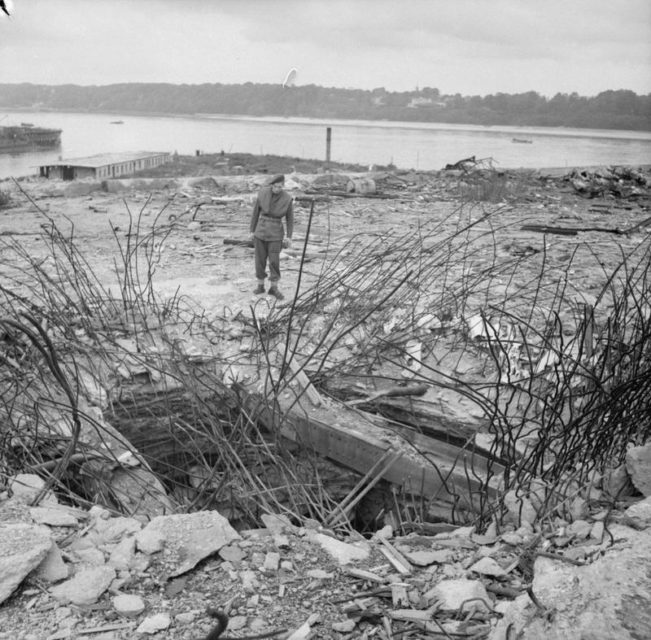
To penetrate deep into the ground, the bomb had to be incredibly strong, and reach extremely high speeds during its descent. An aerodynamic shell allowed the heavy bomb to almost reach the speed of sound during its fall, and a strengthened, high-tensile steel shell containing the explosive helped it to survive the ensuing impact with the ground. A long tail topped with angled fins kept the bomb stable on its way to the target.
It was dropped from a Lancaster bomber (the only aircraft until the American B-29 that was capable of carrying it) at 18,000 feet, to give it enough time to reach a speed of 750 miles per hour. The Tallboy was equipped with multiple fuses that guaranteed its detonation from 30 seconds to 30 minutes after impact. The explosion would leave a crater 24 meters deep and 30 meters wide.
Unlike most other ordnance made by the Allies during the war, the Tallboy’s extreme purpose meant it required equally extreme and pricey engineering. Bomber crews were told to bring Tallboys home if they weren’t used, instead of dropping them on the way back to base.
They were first used against the Saumur train tunnel in June 1944. The bombs penetrated 18 meters of soil before exploding, collapsing and completely blocking the tunnel.
Soon after, Tallboys were dropped near the Blockhaus d’Éperlecques bunker in France, a huge facility that was nearly at the end of its construction. The closest bomb landed 50 meters away, but it still caused such extensive damage to the structure that construction (which had consumed vast amounts of resources) stopped and the building was abandoned.
Despite being designed as an earthquake bomb, the Tallboys proved impressively capable of penetrating reinforced concrete, too. Their use continued throughout the war, where they consistently annihilated anything below their supersonic fall.
The Grand Slam Bomb
With the bombs’ success, Barnes Wallis created an even larger and even madder version: the 22,000-pound Grand Slam, lovingly nicknamed the “Ten Ton Tess.” The mighty Lancaster once again carried the new bomb, albeit highly modified. During flight, the weight of the weapon caused a distinct sag in the wings of the aircraft.
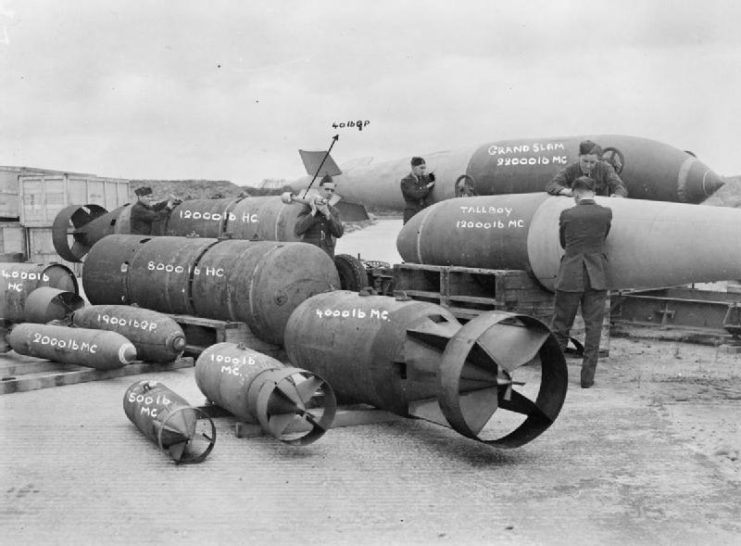
After the Lancaster dropped the bomb, it would quickly climb 200–300 feet.
More from us: World’s First Modern Submarine Identified In The English Channel
While the Grand Slams could be used as earthquake bombs, they were designed with concrete penetration in mind more than the Tallboy was.
Within their hardened chrome-molybdenum shells, the Grand Slams contained 5 tons of Torpex. Operating in the same way as the Tallboy, there was quite literally nothing built during WWII that could have even a remote chance of surviving a well-aimed Grand Slam. By the time the war ended, only 41 Grand Slams were dropped.
